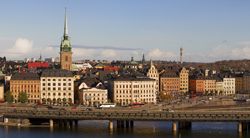Future urban development model
Urban planning is a technical process concerned with controlling the use of land and energy resources related to city expansion. This is important given that larger development projects change existing structures and the city system. Computer models of metropolis growth predict building- and transport-related energy flows. As such, their use has the potential to significantly enhance the quality of urban life. The 'Sustainable urban metabolism for Europe' (SUME) project simulated urban development for seven large European metropolitan areas (Athens, Marseille, Munich, Newcastle, Oporto, Stockholm and Vienna) until the year 2050. The project team applied four integrated approaches to predict future spatial distribution of people, jobs and transport systems. The team took into account many factors that might affect development policies in these cities. For example, it considered that the expansion of many European cities will be considerably slower in the future. Hence, current models have to be adjusted to provide a balanced development plan for population, land and energy resources in future urban development. In order to increase the quality of urban life, the consortium developed a cross-sectional approach, integrating infrastructure provision and urban planning with housing, energy and transport policies. This model is essential for future development of the sustainable, resource-oriented restructuring of European cities.

